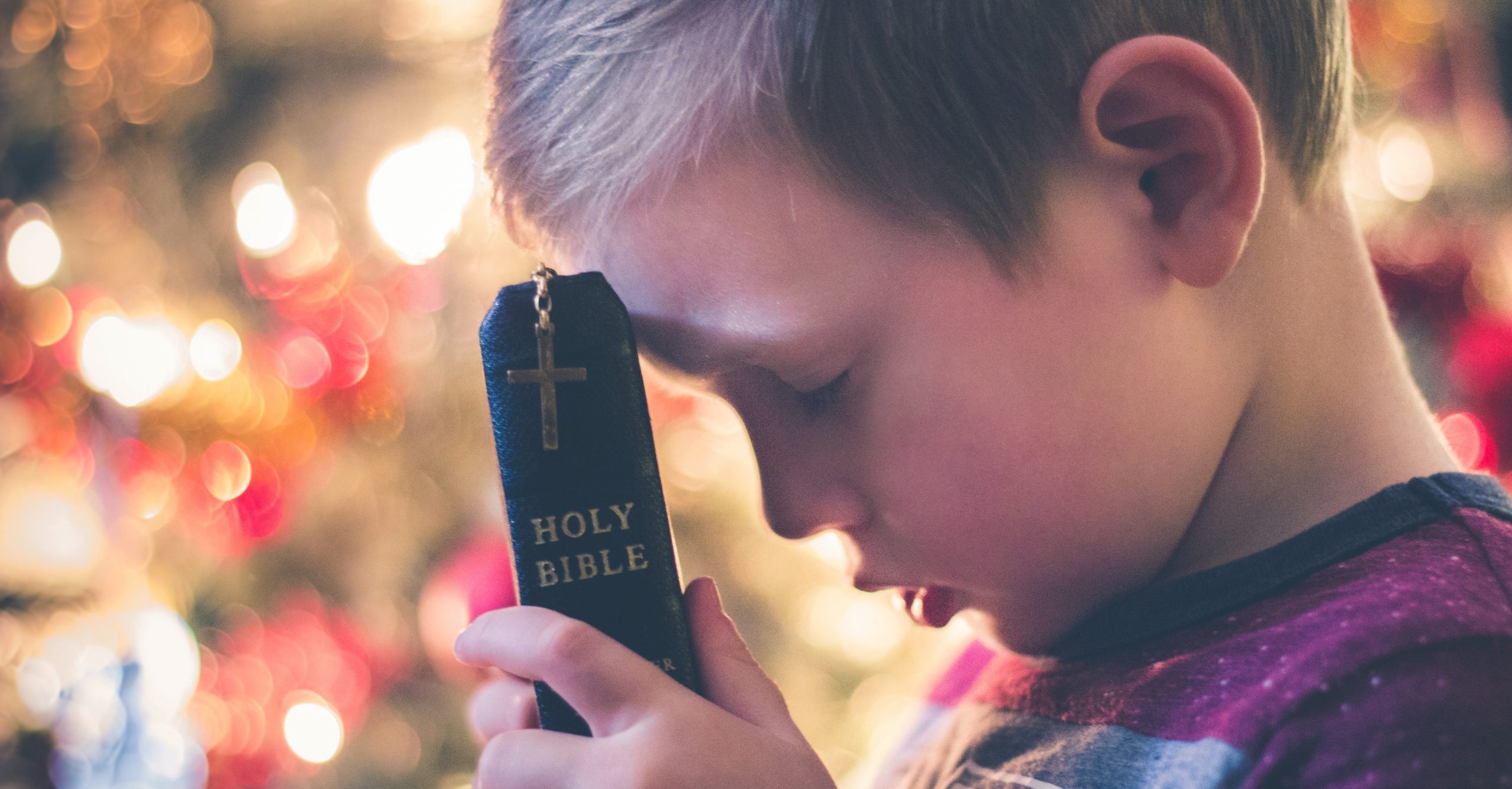When a church is taking its call of equipping the saints seriously, it should be holding many different events, conferences and training days. Now there are two events in particular that have the poorest attendance. Can you guess what they are? Evangelism and Prayer. Why is this?
Prayer should be a significant part of our lives as Christians. We should be praying by ourselves, as part of our own devotion. But it is also important for us to pray together, as a community of believers (James 5:16). Praying with children is equally as important.
Follow my lead
Children learn a lot by being taught, but they learn even more by following our example. So it is not only necessary to tell children that prayer is important, but it is also necessary to show children that prayer is important. This is especially fundamental for those children who are growing up in a non-Christian household because this is not being modelled to them at home. In these cases, you may even need to explain what prayer is. You can simply explain prayer as talking to God.
Over the years I have seen too many teachers trying to pray as if they were praying among adults. This is a big mistake. You may feel a little bit silly praying like a child. And you may even feel like God won’t hear your prayers if they are not eloquently spoken. But this is not the case. You need to keep reminding yourself why you are praying in this way. You are doing this so the children in your class can learn from your example. Most of us can think of a time when we felt like we didn’t want to pray in front of other Christians because we were embarrassed that we wouldn’t say the “right” things or we wouldn’t sound “super spiritual” in our prayers. This is how a child feels when we don’t pray with them on their level of understanding. We need to reassure the children that it doesn’t matter how young they are or what words they use, God loves them and He wants to hear their prayers. So keep this in mind the next time you are praying with a child.
Now you may already love praying with the children in your class or you may find it intimidating. But wherever you may stand on that spectrum, I want to encourage you to keep going. The more you do it, the easier it will become. If praying in this way is not something that comes naturally to you, it might be a good idea to write your prayers down before the lesson.
There are two principles that you need to remember when praying with children:
Keep your prayers short and simple.
Firstly, if your prayers are too long the children in your class will become bored and distracted. This will generally lead to them misbehaving. Secondly, if your prayers are too complicated they will not understand what you are saying. Then they will become bored and distracted and that will lead to… yes you guessed it… misbehaviour.
Age-appropriate
It is also important to keep the age-group of the children in your class in mind as you are preparing your prayer time. Depending on the age group of the children that you are teaching, your prayers may be longer or shorter, simple or more complicated.
Praying with younger children
When I pray with younger children I always like to sing, what I like to call, the prayer song, before I begin my prayer time. This song helps prepare the children for what is about to happen.
“We love to talk to Jesus. He hears what we say. We close our eyes and fold our hands. Let us pray”
The Prayer Song
It is also helpful, when praying with younger children, if you say one line of the prayer and the children then repeat that line after you.
Another idea I recently came across is to get the children to draw a picture of something they would like to pray for. Then they can hold up the picture while saying their prayer.
Praying with older children
Something that I like doing with older children is to write down all of their prayer requests on a prayer sheet or in a prayer diary. Then each week you can follow up with those prayer requests to see how God has been answering them. This is a great way of showing the children that God does truly hear their prayers and answers them.
Alternatively, you may want to have a prayer request box. At the beginning of each lesson you can give each child a piece of paper which they can use to write their prayer requests on at any point during the lesson and put it in the box.
You may also want to teach a simple acronym to help the children know what things they should be praying about. I have often used the acronym “PRAY”.
Praise – This is the time where you can encourage your children to thank God. They can thank Him for who He is, for things that He has given to them, for prayers He has answered or things He has done. (Psalm 106:1)
Repent – This is when you encourage your children to say sorry for things they have done or said that have been wrong. This is a great opportunity to reinforce that God is faithful and He will forgive us our sins when we ask. (1 John 1:9)
Ask for others – It is important for us to remember others in our prayers. There are many people who are sick or in need within our congregations and our communities. We should be praying for them.(Eph 6:18) We should also use this time to pray for the salvation of those who do not yet believe. (Rom 10:1)
Yourself – The Bible teaches us that we should bring our requests to God (Phil 4:6). We, however, often start our prayers with a long list of things that we want God to do for us. It is not wrong to pray for ourselves, but it is good to show the children that they should put others first. This is why we have put this at the end.
How often?
I would highly recommend that you pray twice during your lesson time. The first time at the beginning of the lesson and the second at the end.
The first time of prayer is to ask God to help us to explain the lesson clearly and for the children to understand. I usually like to pray this prayer myself. But there may be times when you feel that there is a child who can pray this prayer for you.
The second time of prayer is in response to what has been taught. I usually like to give the children within my class a chance to pray using their own words. This gives the children an opportunity to practice what they have seen you already do. But under no circumstances should you force any child to pray if they do not feel comfortable praying out loud. One approach in avoiding making any child feel forced to pray is by doing a type of “popcorn” prayer. The children are required to sit in a circle and whenever someone does not want to pray they say “Pop”. Otherwise, the children can hold hands and then squeeze the child’s hand next to them if they do not wish to pray.
You may want to also provide other opportunities for prayer during your time with the children. For example, praying before snack time or when a child mentions that someone in their family is sick.
Wherever possible, however, try to encourage them to pray for themselves. One way of encouraging your class to pray is by giving them the beginning part of the prayer and by allowing them to complete it, by adding in a word or short sentence. For example: “Thank-you God for… or sorry God for…”. Alternatively, you can write out a prayer for one child each week that they can read out loud to the rest of the class. This will help to build up their confidence so that one day they will feel more comfortable praying on their own using their own words.
During this time of prayer you will also have the opportunity to pick up on where a child is in their spiritual walk. Furthermore, you will be able to see if the children have understood what you taught them about in that particular lesson. This may give you a good guide as to what you are needing to teach the children in the future.
This post is mainly aimed at Children’s Church teachers. There are many principles, however, that can be used by parents at home with their own children. In conclusion, remember to always keep your prayers short and simple. You are praying in this way so the children in your class can learn from your example. It is not only necessary to tell children that prayer is important, but it is also necessary to show children that prayer is important.
Thanks for reading my post. I hope you found it helpful. Please send me any feedback, comments or questions that you may have. I would also like to hear if there are any topics that you would like me to deal with in the future. Any suggestions will be greatly appreciated.
Bye for now.
“… praying at all times in the Spirit, with all prayer and supplication. To that end, keep alert with all perseverance, making supplication for all the saints,” (Eph 6:18)




